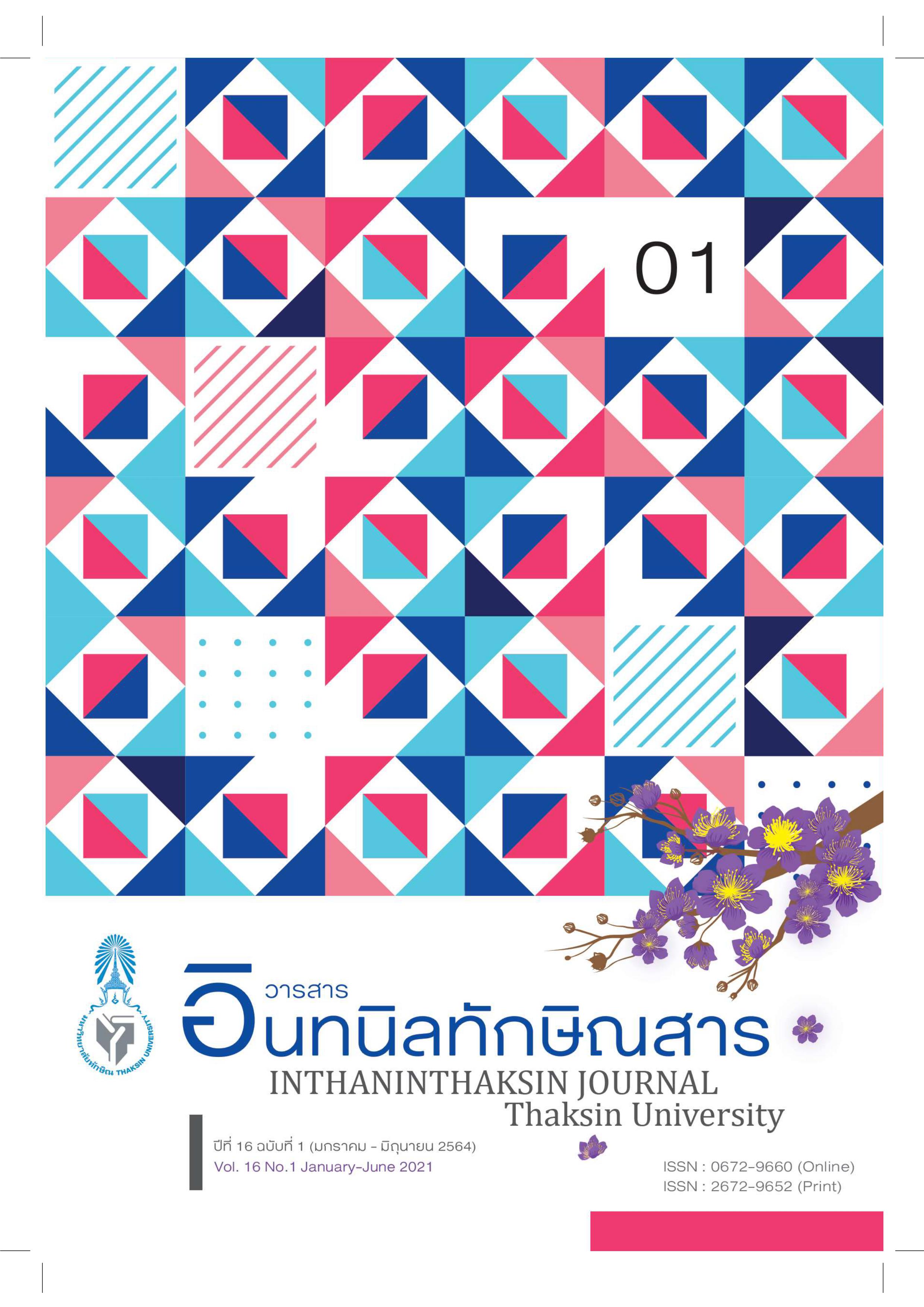อัตลักษณ์จีนจากแบบเรียนสร้างเสริมลักษณะนิสัยมัธยมศึกษาตอนต้นของประเทศจีน
Main Article Content
บทคัดย่อ
บทความนี้มีวัตถุประสงค์เพื่อวิเคราะห์สาระสำคัญของแบบเรียนสร้างเสริมลักษณะนิสัยมัธยมศึกษาตอนต้นของจีน ศึกษาอัตลักษณ์จีนและกระบวนการสร้างอัตลักษณ์จีนจากแบบเรียนสร้างเสริมลักษณะนิสัยมัธยมศึกษาตอนต้นของจีน โดยใช้ระเบียบการวิจัยเชิงเอกสารและใช้ทฤษฎี อัตลักษณ์ ผลการศึกษาพบว่า สาระสำคัญของแบบเรียนสร้างเสริมลักษณะนิสัยมัธยมศึกษาตอนต้นของจีน ประกอบด้วย โครงสร้างและเนื้อหาของแบบเรียน รวมถึงวิธีการสอนและบทบาทของครูอัตลักษณ์จีน ประกอบด้วย อัตลักษณ์ของชาติจีน อัตลักษณ์ทางวัฒนธรรมดั้งเดิมของจีนและอัตลักษณ์ทางชาติพันธุ์จีน กระบวนการสร้างอัตลักษณ์จีนมี 5 ประการ ประกอบด้วย นโยบายการศึกษาของจีน แผนการพัฒนาการศึกษาของจีน มาตรฐานหลักสูตรวิชาสร้างเสริมลักษณะนิสัย การดำเนินการเรียนการสอนวิชาสร้างเสริมลักษณะนิสัย และการปฏิบัติค่านิยมหลักสังคมนิยมที่ปรากฎในแบบเรียน การวิจัยในอนาคตควรศึกษาอัตลักษณ์ท้องถิ่นและศึกษาเกี่ยวกับอัตลักษณ์ทางชาติพันธุ์จีน
Article Details
เอกสารอ้างอิง
อภิญญา เฟื่องฟูสกุล. (2546). อัตลักษณ์= Identity : การทบทวนทฤษฎีและกรอบแนวคิด. กรุงเทพฯ : คณะกรรมการสภาวิจัยแห่งชาติสาขาสังคมวิทยา สำนักงานคณะกรรมการวิจัยแห่งชาติ.
Bin Z., & Fangfang W. (2017). Cultural Identity of Contemporary Chinese People, Bulletin of Chinese Academy of Sciences. 32(2), 175 - 187.
Guixian, W. (2016). Research on the Relationship between Chinese Dream and Core Socialist Values, Studies on Core Socialist Values. 2(3), 35-42.
Gungwu, W. (1993). Greater China and the Chinese Overseas, The China Quarterly. 136(30), 926 – 948.
Ministry of Education of China. (1993). Teachers Law of the People’s Republic of China. China: Xinhua News Agency. Retrieved March 10, 2020, from: http://www.moe.gov.cn/s78/A02/zfs__left/s5911/moe_619/tnull_1314.html.
Ministry of Education of China. (1995). Education Law of the People’s Republic of China. China: Xinhua News Agency. Retrieved March 10, 2020, from: http://www.moe.gov.cn/s78/A02/zfs__left/s5911/moe_619/201512/t20151228_226193.html.
Ministry of Education of China. (2006). Compulsory Education Law of the People’s Republic of China. China: Xinhua News Agency. Retrieved March 10, 2020, from: http://www.moe.gov.cn/s78/A02/zfs__left/s5911/moe_619/201001/t20100129_15687.html.
Ministry of Education of China. (2011). the standard course of moral lesson textbook. Peking Normal University Press.
National Bureau of Statistics of China. (2010). Sixth National Population Census of the People's Republic of China. China: National Bureau of Statistics of China. Retrieved March 12, 2020, from: http://www.stats.gov.cn/tjsj/pcsj/rkpc/6rp/indexch.htm.
People's Daily. (2002). Three Representatives. China: People's Daily Online. Retrieved March 11, 2020, from: http://cpc.people.com.cn/GB/64156/64157/4418474.html.
Skinner, G. William. (1975). Chinese Society in Thailand: an Analytical History. Ithaca, New York: Cornell University Press.
Stryker, S., & Burke, P. J. (2000). The past, present, and future of an identity theory, Social Psychology Quarterly. 63(4), 284 – 297.
The central government of China. (2018). Constitution of the People’s Republic of China. China: Xinhua News Agency. Retrieved March 10, 2020, from: http://www.gov.cn/guoqing/2018-03/22/content_5276318.htm.
The textbook research center and the textbook research center for moral lesson. (2008). Junior high school education moral lesson textbook. People's Education Press.
Wei G., & Mengmeng Y. (2020). Unified Textbooks and National Identity: A Content Analysis Study on National Identity Education in the Unified Textbooks of Morality and Rule of Law for Junior High School, Journal of Educational Studies. 33(3), 34 – 43.


